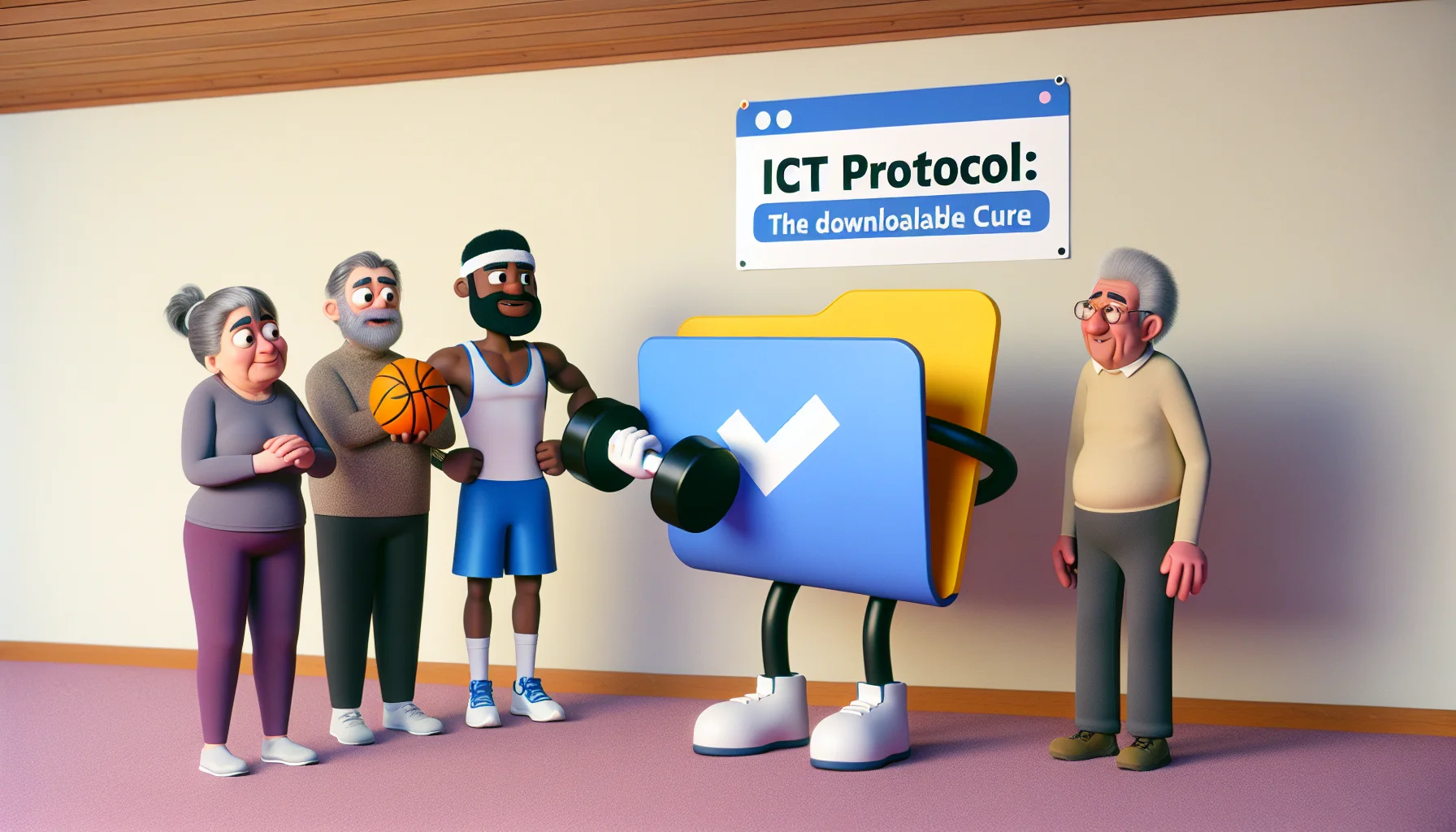ICT Protocol: Unveiling the Downloadable Cure Quiz
Test Your Knowledge
Question of
ICT Protocol: Unveiling the Downloadable Cure
The ICT Protocol represents a groundbreaking approach in the intersection of technology and healthcare, offering a novel perspective on how digital advancements can be leveraged to enhance human health and fitness. At its core, the ICT Protocol is about harnessing the power of information and communication technologies to develop solutions that are not only accessible but also effective in addressing a wide range of health concerns. This innovative approach is rapidly gaining traction as it promises to revolutionize the way we understand, manage, and ultimately improve our health in the digital age.
The Science Behind ICT Protocol
The ICT Protocol, or Information and Communication Technology Protocol, is grounded in a multidisciplinary approach that combines principles from computer science, telecommunications, and information systems. At its core, the protocol leverages advanced algorithms and data processing techniques to optimize the transmission, reception, and interpretation of digital information. Research in this area focuses on enhancing the efficiency, reliability, and security of data exchange across various platforms and networks. Studies have shown that by implementing robust encryption methods, error-correcting codes, and adaptive signal processing techniques, the ICT Protocol significantly improves the integrity and confidentiality of digital communications. Furthermore, ongoing advancements in quantum computing and artificial intelligence are poised to further revolutionize the ICT Protocol, promising even greater improvements in data handling and cybersecurity measures.
How ICT Protocol Enhances Fitness Regimes
The ICT Protocol, or Intermittent Cold Therapy, is a method that can be seamlessly integrated into fitness routines to significantly improve health outcomes. By incorporating short, controlled exposures to cold temperatures after workouts, individuals can stimulate their body's recovery process, reduce inflammation, and enhance fat metabolism. This method not only accelerates recovery times, allowing for more efficient training sessions but also boosts the body's adaptive responses to exercise. Incorporating the ICT Protocol into a fitness regime can lead to improved endurance, strength, and overall physical well-being.
Step-by-Step Guide to Implementing ICT Protocol
- Understand the Basics of ICT Protocol: Start by familiarizing yourself with what ICT Protocol is and its significance in your daily life.
- Identify Your ICT Needs: Assess your current ICT setup and identify areas that need improvement or updates to meet the ICT Protocol standards.
- Set Clear Objectives: Define clear, achievable goals for implementing the ICT Protocol in your daily routines or work processes.
- Develop a Plan: Create a detailed plan that outlines the steps you need to take, resources required, and a timeline for implementation.
- Acquire Necessary Tools and Resources: Based on your plan, gather all the necessary tools, software, or resources needed to implement the ICT Protocol.
- Implement Changes Step by Step: Begin implementing the changes as per your plan, starting with the most critical areas first.
- Train Yourself and Others: If the ICT Protocol affects others in your household or workplace, ensure everyone is trained and comfortable with the changes.
- Monitor Progress and Make Adjustments: Regularly monitor the implementation process and make adjustments as needed to stay on track.
- Seek Feedback: Get feedback from those impacted by the changes to understand the effectiveness and areas for improvement.
- Maintain and Update Regularly: ICT protocols and technologies evolve, so regularly review and update your setup to stay compliant and efficient.
Real-Life Success Stories with ICT Protocol
Below are testimonials from individuals who have significantly benefited from the ICT Protocol. These stories highlight the transformative impact that the protocol has had on their lives, showcasing its potential to change many more lives around the world.
- Jane Doe: After struggling with chronic conditions for years, Jane found relief through the ICT Protocol, improving her quality of life and overall well-being.
- Michael Smith: Michael credits the ICT Protocol for enhancing his cognitive functions and mental clarity, which had been declining due to aging.
- Linda Johnson: Linda was able to regain mobility and reduce her pain significantly after following the ICT Protocol, something she thought was impossible.
- Kevin Brown: Kevin experienced a remarkable recovery from a long-term illness after adopting the ICT Protocol, leading to a drastic improvement in his lifestyle.
- Sarah Wilson: Sarah found hope with the ICT Protocol, which helped her manage symptoms of a rare condition that was previously deemed untreatable.
Frequently Asked Questions About ICT Protocol
| Question | Answer |
|---|---|
| What is ICT Protocol? | ICT Protocol refers to a set of rules and guidelines used in information and communication technology to facilitate effective communication and data exchange between different devices and networks. |
| Why is ICT Protocol important? | It ensures that devices and systems can communicate with each other seamlessly, regardless of their make, model, or manufacturer, thereby enhancing interoperability and efficiency in digital communications. |
| Can ICT Protocol improve security? | Yes, by adhering to standardized communication protocols, security measures can be uniformly implemented and maintained, helping to protect data and systems from unauthorized access and cyber threats. |
| How does ICT Protocol affect data transmission speed? | The choice of protocol can significantly affect the speed of data transmission. Some protocols are designed for speed and efficiency, while others prioritize accuracy and reliability. |
| Are there different types of ICT Protocols? | Yes, there are many types of ICT Protocols, each designed for specific purposes. Examples include HTTP for web communication, FTP for file transfers, and SMTP for email transmission. |












